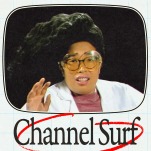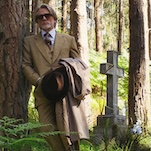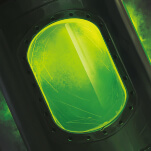Pop culture can be as forbidding as it is inviting, particularly in areas that invite geeky obsession: The more devotion a genre or series or subculture inspires, the easier it is for the uninitiated to feel like they’re on the outside looking in. But geeks aren’t born; they’re made. And sometimes it only takes the right starting point to bring newbies into various intimidatingly vast obsessions. Gateways To Geekery is our regular attempt to help those who want to be enthralled, but aren’t sure where to start. Want advice? Suggest future Gateways To Geekery topics by emailing [email protected].
Plus, just what the hell is a slasher? Even seasoned horror junkies have a hard time agreeing on a definition. Much as “torture porn” resists easy classification (although it seems to be, for whoever’s using the term, “violent movies I don’t like”), a slasher film can only be defined by general terms and personal taste. For the purposes of this article, supernatural killers are out, which means no Nightmare On Elm Street. (Also no Leprechaun, Child’s Play, or Friday The 13th movies from part 6 on.) There’s a killer, or a pair of killers, and they’re bumping off people, until a lone survivor (a.k.a., the Final Girl, a virginal young woman who’s probably a bit smarter than her friends) stumbles across the bodies the killer has carefully planted for her to find; a cat-and-mouse game ensues, the Final Girl turns the tables on the killer, and then there’s one final scare before the end credits.
Why: The heyday of the slasher film is considered to be somewhere in the late ’70s or early ’80s. After that, the backlash against the genre, the MPAA’s growing restrictions on gore effects, and the market glut of inferior imitations all combined to make guys in masks only really welcome in the wrestling ring. But then Wes Craven, the man behind the Elm Street movies, teamed up with screenwriter Kevin Williamson to make a self-referential, audience-friendly slasher flick, one that rewarded horror nerds for their knowledge and attracted new fans with some up-and-coming young stars, including Neve Campbell, Jamie Kennedy, Rose McGowan, and the just-on-the-edge-of-her-comeback Drew Barrymore. Scream’s success led to two sequels (and Scream 4 is in the works), as well as a brief resurgence of slashers, with junk like I Know What You Did Last Summer, Urban Legend, and Valentine managing to profit (to varying degrees) off the revival, while at the same time reminding everyone why it might’ve been better to let nostalgia rest in peace.
But that’s not important right now. What is important is that Scream, while not perfect, is well-crafted and entertaining, the kind of “safe” horror movie that gets in some decent scares and nasty kills without ever really getting under viewers’ skin. The line between thriller and fright flick can be thin, and Scream keeps its balance; one of its most effective elements is the way the movie’s well-scrubbed direction manages to hide the empty misanthropy at the core of Williamson’s script, while still providing glimpses of the real unpleasantness that’s always been a core element of Craven’s work. This is a world where friends die brutally, peers make jokes about eviscerations, and being close to someone just means they’ve got a better angle when they stick the knife in. The self-referential quipping hasn’t aged well, and the uncomfortable sexual politics—like Campbell’s murdered mother, whose supposed promiscuity takes a lion’s share of the blame for murders across the whole Scream franchise, or Campbell’s own unwillingness to sleep with her boyfriend right away—aren’t all that progressive. But these things only really come clear on repeat viewings. For beginners, Scream is a fun ride, and a good introduction to what makes slashers so appealing.
Next steps: Halloween (1978) is the best example of a fairy-tale kind of horror, and one that could easily take the place of Scream as a gateway film. John Carpenter doesn’t bother with postmodern tricks, he just puts together a story whose simplicity and sincerity are its greatest strengths. Jamie Lee Curtis attracts the attention of the Boogey Man, Michael Myers, and he goes after her and her two friends, babysitters who might just as well be princesses in their separate castles, unaware of the danger that follows them. Meanwhile, Donald Pleasence, as Michael’s former psychiatrist and possibly the world’s most unlikely knight errant, tries to stop the most awful thing from happening. The result is one of the best examples of how well slashers can work when done properly: lean, but with solid characters, and dark, but not completely bereft of wit. (There also isn’t a lot of visible gore, something the Halloween sequels went out of their way to rectify.)
Black Christmas (1974) is another important touchstone. Although not as influential (or as good) as Halloween, Bob Clark’s film about a group of sorority sisters and the world’s worst obscene caller is strikingly creepy, with one of the most effectively mean-spirited endings in a genre where “mean-spirited ending” is practically a defining trait. The comic relief is lousy, and the tone tends to whiplash because of it, but for patient viewers, the cumulative effect is haunting. And really, the excellence of that final scene can’t be understated; before the slasher was well and truly established, Christmas made a statement about the ineffectuality of the forces of law and order against true madness, which every movie in the genre since has struggled to equal.
To really dig deep, check out Mario Bava’s Twitch Of The Death Nerve (1971), an absolutely terrific flick about a bunch of people getting bumped off over some contested property. It’s vicious, cynical, and full of the beautifully hideous violence Bava did best. Although arguably not a true slasher, as it lacks any real protagonist or single threat, its grubby nastiness and carefully designed shocks were a huge influence on the genre. And if anyone ever questions the artistic value of the slasher, there’s always Alfred Hitchcock’s Psycho (1960), a proto-slasher whose cross-dressing, mommy-issues-laden antagonist set the stage for dozens of sexually ambivalent murderers down the line.
After making some headway through the high-quality entries, though, it’s important to get into the trenches, to see what separates the dabbler from the true fan. There’s the mini-genre of slashers Jaime Lee Curtis did after Halloween, including the solid Terror Train (1980) (with a young David Copperfield) and the less solid but still interesting Prom Night (1980). Lots of slashers revolve around holidays or special dates—the original Friday The 13th (1980) is worth seeing on name value alone, and My Bloody Valentine (1981) is distinctive for its setting and cool killer design. Sleepaway Camp (1983) has an insane twist that, for those who haven’t already been spoiled on it, has to be seen to be believed. He Knows You’re Alone (1980) is a semi-Halloween rip-off with some likeable leads, as well as a young Tom Hanks, his early onscreen persona not quite fully developed.
All these movies (and others, like 1981’s The Burning and The Funhouse) have a charming honesty to their cheapness, an unforced, gawky lack of style that makes their shortcomings endearing. Modern horror films are often overly produced, disappointingly slick affairs, with plastic people getting into plastic problems, all underscored by chunks of rock and grunge music so disposable that the bands performing will have split up before the end credits roll. While old-school slashers aren’t always scary, they have a refreshing directness, a lack of shame at their roots that makes them unique, even at their worst.
Where not to start: Almost every slasher made in the wake of Scream ranges from boring to awful, and all are best avoided. Special mention goes to I Still Know What You Did Last Summer for its ridiculous title and bone-deep stupidity. It’s funny, but not on purpose.








































